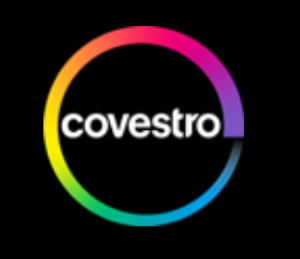Covestro publishes climate neutrality targets for scope 3 emissions
Pittsburg, PA – Covestro has published its climate neutrality targets for scope 3 emissions, completing its climate strategy for reducing greenhouse gas emissions. As a short-term goal, the company plans to reduce greenhouse gases by 10 million metric tons by 2035. This corresponds to a drop in emissions of 30 percent compared to the base year 2021, with some growth-related emissions through 2035 included in the calculation. In the long-term, Covestro plans to be climate-neutral in terms of scope 3 emissions by 2050.
Covestro previously published ambitious targets for scope 1 and scope 2 emissions in 2022, which included achieving operational climate neutrality by 2035. Scope 1 emissions come from Covestro’s own production processes, while scope 2 emissions result from purchased energy sources. Scope 3 emissions include all other greenhouse gases produced in the upstream and downstream supply chains. These make up around 80 percent of the company’s total greenhouse gas emissions. Raw materials purchased by Covestro are responsible for the greatest share of scope 3 emissions.
Reducing scope 3 emissions will require a transformation of the entire supply chain. A variety of factors influence one another – including the availability of alternative raw materials, renewable energies, technological advancements and new processes, as well as market transformations – and play a key role in this process. To achieve net zero emissions, Covestro expects to make targeted investments amounting to several hundred million euros over the next 10 years.
“Our Scope 3 targets are both ambitious and realistic supported with aconcrete implementation plan. This is an essential building block of our climate strategy. Completing our climate neutrality targets is another major milestone in aligning all of our activities with our vision of becoming fully circular. In this way, we are demonstrating once again that we take a leading role in transforming the chemical industry” says Dr. Markus Steilemann, CEO of Covestro.
Four levers for achieving our target and reducing scope 3 greenhouse gases
In its climate strategy, Covestro is concentrating on four scope 3 categories in the short to medium term1. By managing these four categories, which together make up 21.3 million tons of greenhouse gases per year (as of 2021), Covestro will be able to reduce scope 3 emissions by 10 million metric tons by 2035. To do so, Covestro has identified four key levers. Projects related to these are already ongoing, with additional concrete implementation measures to follow.
“Calculating scope 3 emissions is challenging for us as a chemical company. This is because such emissions are generated both upstream, when we purchase raw materials and downstream, after we sell our products. Because of this, measures to reduce scope 3 emissions impact our suppliers as well as our customers and will require a transformation of the entire supply chain,” explains Dr. Torsten Heinemann, Head of Innovation and Sustainability at Covestro. “Through innovation, cooperation with our partners along the supply chain, and a detailed plan of action involving all four levers, we will achieve our scope 3 targets”, Heinemann continues.
The first lever requires suppliers to reduce their scope 1 and scope 2 emissions. Many of Covestro’s raw material suppliers have already defined their own scope 1 and scope 2 targets, which in turn can count towards Covestro’s scope 3 targets. Covestro is continuing its discussions with its suppliers on this issue, for example during a scope 3 supplier event the company will hold on March 4, 2024. Additionally, the company recently executed a long-term supplier agreement for chemically recycled raw materials with Encina. The January 2024 agreement covers the supply of raw materials produced from end-of-life plastics, which reduce Covestro’s scope 3 emissions. Other important short-term changes include, for instance, electrification, improving efficiency, and carbon capture and storage (CCS) in supplier production processes.
The second lever is the profitable sale of products made from alternative raw materials. Covestro already has circular solutions in its product portfolio under the CQ (circular intelligence) label. CQ products are made of at least 25 percent alternative, non fossil-based raw materials.
Covestro’s third lever to reduce scope 3 emissions are its MAKE projects. These are investment projects in which Covestro manufactures alternative raw materials with a smaller carbon footprint. These projects include, for instance, manufacturing bio-based aniline or using proprietary recycling technologies to make it possible to use recycled raw materials. Another example of a MAKE project is Covestro’s Evocycle CQ technology, which is used to recycle mattresses.
The fourth lever encompasses a large number of different factors that help to reduce scope 3 emissions. These include, for instance, increasing recycling rates to reduce emissions from waste incineration, and changes to logistics and primary energy extraction. In addition, Covestro will accelerate innovation processes through digital research and development and artificial intelligence.
Climate neutrality can only succeed through close cooperation along the entire supply chain. Covestro’s scope 3 climate neutrality targets are an important part of this and will be implemented alongside customers and suppliers.
1Raw materials (part of category 3.1); end-of-life (EoL) handling (category 3.12); fuel and energy-related (category 3.3); upstream transportation (category 3.4)

